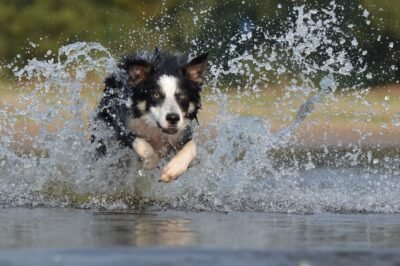Otterhounds, natural water lovers and strong swimmers, need safe supervision during water activities. This blog offers essential tips for ensuring your Otterhound’s safety while they splash around, including understanding their swimming abilities and recognizing distress signals. Follow these guidelines for a enjoyable and secure experience with your furry companion.
Start slowly with shallow water for dogs unaccustomed to swimming. Monitor energy levels closely for signs of fatigue like heavy panting or slowing down, indicating the need for breaks. Remember, all dogs, even avid swimmers, have limits.
For your Otterhound, a properly fitted life jacket is crucial, even for strong swimmers. Unforeseen risks like strong currents or exhaustion may arise. The life jacket offers buoyancy and easy retrieval. It should be snug but allow freedom of movement for your dog.
Never leave your Otterhound alone near water, even if you think they’re a good swimmer. Stay vigilant, within reach, and keep them in sight at all times. This applies to all water areas – pools, lakes, rivers, and oceans.
Recognizing distress signs in your Otterhound can prevent accidents from becoming tragedies. Signs may include excessive splashing, failed attempts to climb out, swimming with whining or barking, and showing disorientation or panic. If you notice any of these behaviors, act promptly to assist your dog.
Before starting water activities with your Otterhound, make sure they have updated vaccinations for diseases like leptospirosis. Check their ears regularly for infections since floppy-eared breeds such as Otterhounds are prone to this, which may worsen with frequent swimming.
Sources News From Various Digital Platforms, Websites, Journalists, And Agencies.








Leave a Reply